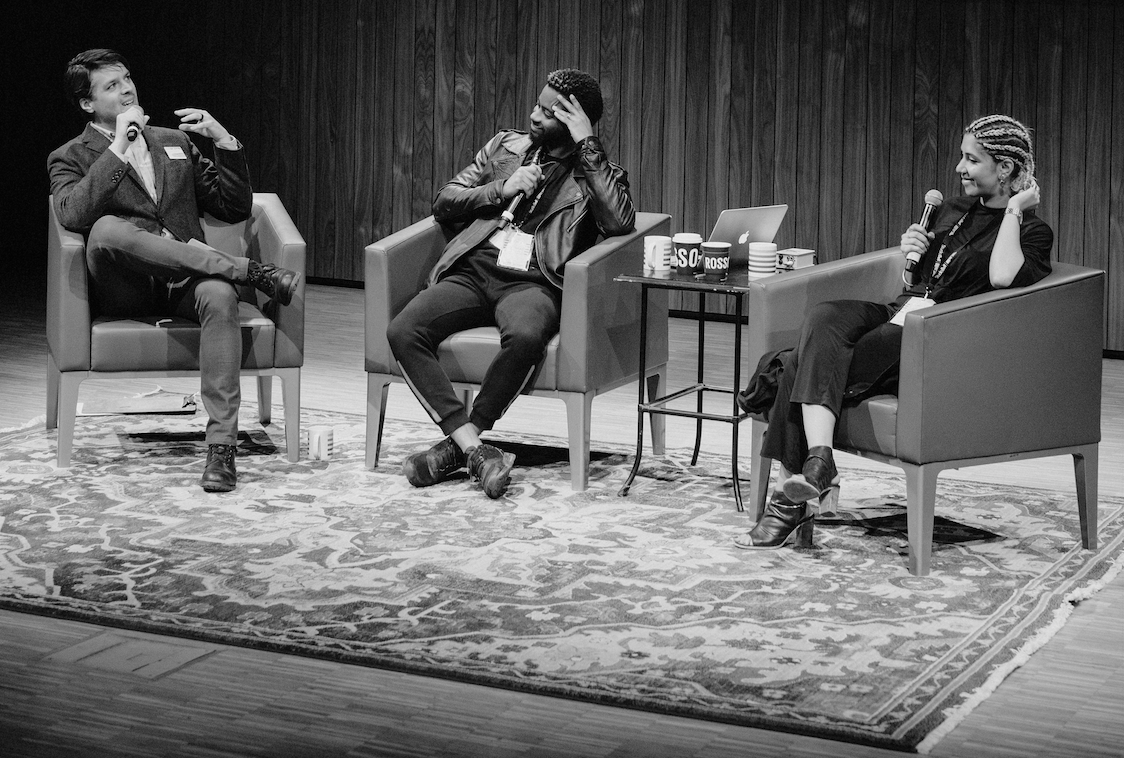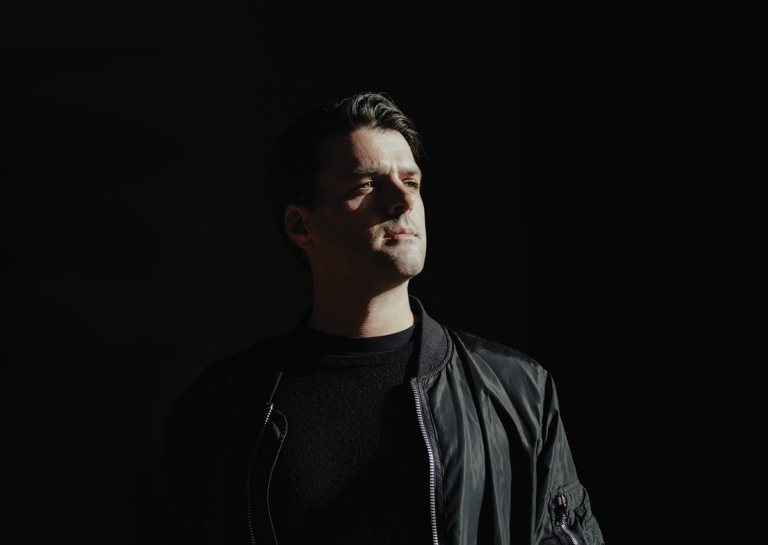Here we are. A year and a half into the pandemic and we’re still trying to figure out what happened and what’s coming next. The music industry was one of the hardest hit spaces and the pandemic has left us reminiscing about the good ol’ days of getting pushed in a crowd and having a beer spilled down our shirts, all while screaming and dancing in the presence of our favorite musicians.
But with the memories, comes the questions. Will we ever experience the magic of live music with a group of people again or are we forever doomed to live streams? Is it safe to head out to these live shows and festivals as things start to re-open? We know artists are suffering, but how can we really support and connect with them? Streaming their music is good right? Will any positive change come out of this sh*t show?
To answer these questions, we turned to Canada’s musical renaissance man, Paul Brooks. Known for “connecting people, music and culture,” Paul has over fifteen years of experience producing, curating, and promoting diverse music and cultural experiences for leading brands, including the National Music Centre, Bass Coast Festival and the Hifi Club. He’s done everything from playing and teaching music, to curating and booking talent for nightclubs and festivals, to hosting radio shows, and most recently, helping develop an independent digital streaming platform and working as a publicist with the prestigious media relations firm Take Aim Media. With music industry knowledge deeper than an 80s rock ballad, we caught up with Paul to talk about his projections on the state of the music industry post-pandemic.
Steph Rushton: How have you stayed connected to the music space throughout the pandemic?
Paul Brooks: I went back to radio broadcasting and produced a program called Rave Dad’s Diary for CJSW. I’m using it as a platform to talk to my peers, artists, and music industry professionals about how they’re continuing to connect with audiences through the pandemic and what they forecast the music space will be like post-pandemic.
SR: Other than live shows, how has the music industry been impacted?
PB: Having worked in the complex ecosystem behind the scenes, I can tell you that there can be dozens of people involved in any given project or production. The implications of the pandemic are far reaching as many of these people have lost their jobs or been forced to leave the industry. So, there’s going to be a huge brain drain. Like… who’s still going to be working in the industry? That’s a concern for me.
A pain that I’ve experienced – and that I know a lot of my creative colleagues have experienced – is being out of work and feeling depressed about it. To cut off a creative person from their creative outlet is extremely hard on one’s mental health. Even being an artist in normal circumstances is notoriously hard on one’s mental health, so this is something I hope to see more focus on as we recover from the pandemic. I want to give a shout out to anyone who’s experienced some lows; know that you’re not alone.
SR: Has the pandemic exacerbated any existing issues in the music industry?
PB: Music has been systematically devalued through the continuous evolution of how we listen to it. Streaming has made music more accessible than ever, but the revenue is distributed in a way that is inequitable and favors the big artists and labels. Without live shows, a lot of artists are completely screwed. So, unless they have a huge following and money in the bank, some artists can’t afford to continue making music right now. I’ve heard of artists – big artists, mid and later career – who’ve had to move back in with their parents because they lost their main income from touring, and other income sources, like streaming, are not enough for most artists to survive off of. This is a huge problem and it’s going to wipe out a whole class of artists if we’re not careful.

SR: How do streaming platforms devalue music?
PB: Paying $9.99 a month for all the music in the world is way too cheap. Artists had no choice in the price they are paid for their music, and they are paid almost nothing, but to remain competitive they need to have their music up on the digital streaming platforms. So, when people wonder why their favorite indie artist hasn’t been releasing a ton of music throughout the pandemic, it’s largely because it’s just not sustainable. We, as consumers of music, need to be conscious of how we’re spending our money and what we’re asking of artists in return for paying such a low price. Our desire to support artists and our desire to access music at a low-cost contradict one another, and we can’t have both.
SR: How can we best support artists?
PB: Connecting with artists directly, buying their merch and buying their music physically, or buying it through a platform like Bandcamp, during Bandcamp Friday when the artists get 100% of the proceeds. But when you think about the invisible ecosystem that is happening behind the scenes, nobody’s setting up a GoFundMe or donating to all the people who support artists and make live events happen. This is when I feel that governments really need to step in to kickstart things and support creatives. So next election, vote for representatives who give a fuck about art.
SR: As we enter summer, I’m seeing festivals popping up around the world. What do you think we can expect from the new era of “corona-safe parties”?
PB: Nobody has an answer to this. Some countries are having horrible second, or third waves and other countries are way ahead with their vaccination schedules, so it’s going to look different in each place. In Canada, the government is projecting live events will return by the end of summer – but that’s with all kinds of asterisks. A lot of festivals here have already postponed for another year because there’s a huge financial risk and extra costs associated with putting on a hybrid event that adheres to social distancing.
But then there’s places like New Zealand, that had a 50,000-person concert because they got infections down to 0 and had their population vaccinated. So, if we can get 75% of the population vaccinated, we can drop our restrictions and basically get back to life as “normal”. But we’re still far from that point – especially on a global scale. To me, the path forward is a proper vaccine rollout around the world. Not just in the richest countries, but in all countries. I see a renaissance on the horizon, but COVID is still devastating us right now. And we’re all kind of pretending that it’s back to business, but it ain’t.
SR: I went to a couple of parties last summer that capped the capacity at 50% to adhere to social distancing, so it was very difficult to get a ticket. If events start becoming more “VIP” what’s that going to look like?
PB: When you think about how much the budget increases with having all the COVID protocols in place combined with a fraction of the ticket sales, it’s going to price events at a range that only affluent people can afford. This was already happening at a lot of festivals, but the pandemic has made it worse. So, it’s going to wipe out a whole class of artists, and music fans.
SR: Many artists turned to livestreams to stay connected with their fans in lieu of concerts. Do you think livestreams will continue after the pandemic?
PB: Live streams are good because they increase the accessibility of events for people around the world and can also provide extra ways for artists to earn income. They’re simple to execute, so people got creative and made some great interactive experiences. But I think we’ve explored the limits of live streaming [laughs]. However, this is also one more thing we’re asking artists to do, and it’s exhausting for artists to be creative, and have an artistic output, and engage regularly on social media. So, we need to be conscious of how much we are expecting of artists because it’s burning them out. It’s been a good lifeline, but the moment that live music returns, that’s where everyone’s going to be.
SR: Another part of the industry that went online was music conferences – did you attend any?
PB: One of the best online experiences I had was with MUTEK Montreal. They put together a compelling and diverse program of international artists and workshops and delivered it in a very effective way. It was a great example of the organizers trying out something completely new and utilizing digital platforms to their full potential. We need to look to leading cultural organizations to see how they’re using online platforms to get some interesting ideas to increase engagement and not just play into everybody’s dread of Zoom.
SR: What are some changes you hope to see in the music industry as it recovers?
PB: In addition to an increased focus on mental health, I’d like to see greater focus on environmental sustainability. Festivals and shows are inherently wasteful – plastic everything, touring, artists and fans flying around the world – all of this has a huge carbon footprint. There are so many simple changes that can be made, and I hope to see more venues using their platforms to bring about positive change. Music Declares Emergency is a great example with their campaign “No Music On A Dead Planet”. People should also support their local music scene instead of always flying across the world to attend some huge festival. Party local. We must remember that even though we’re getting over the whole COVID hurdle, there’s still the issue of climate change and this is a huge opportunity to bring about positive change on multiple levels.
X Check out Paul’s radio show Rave Dad’s Diary on CJSW 90.9 FM here
X Stay up to date with Paul’s projects and follow him here


